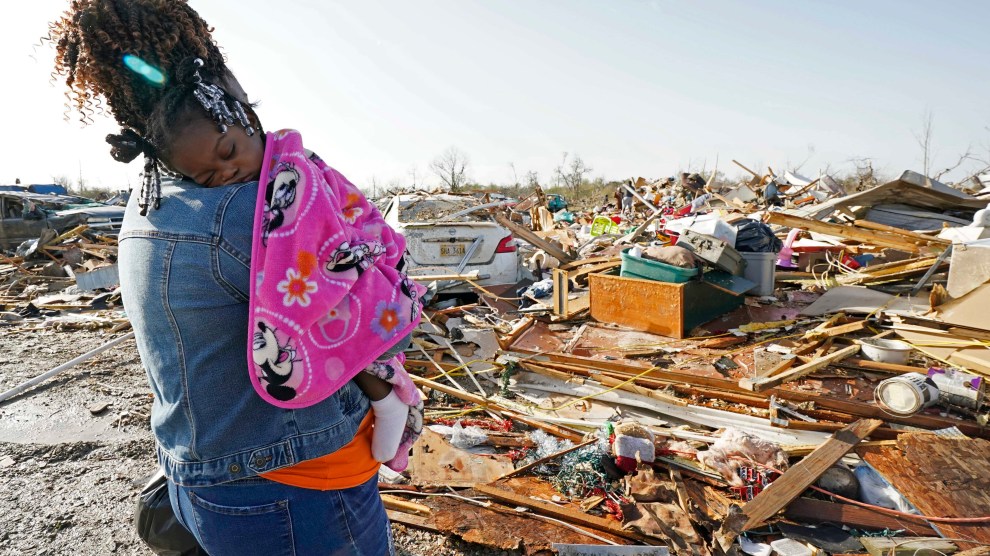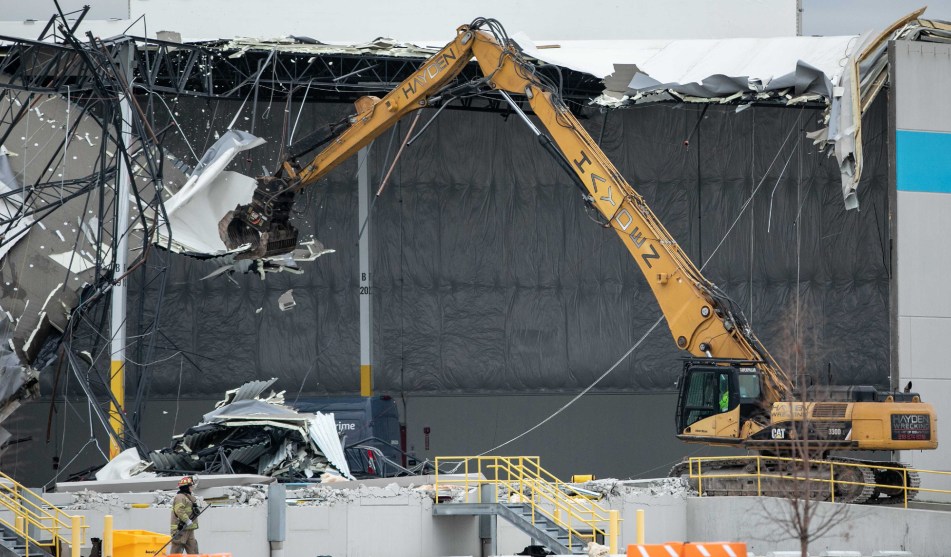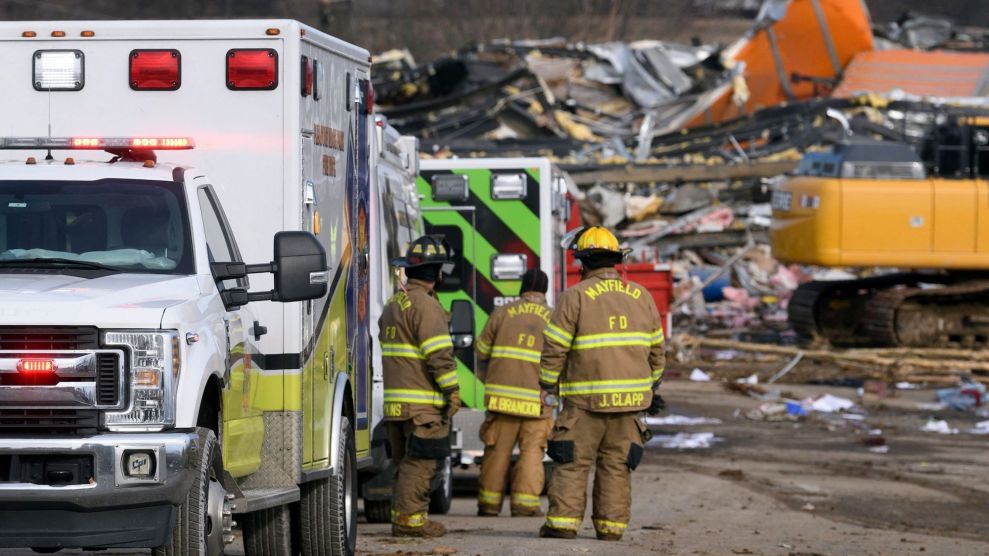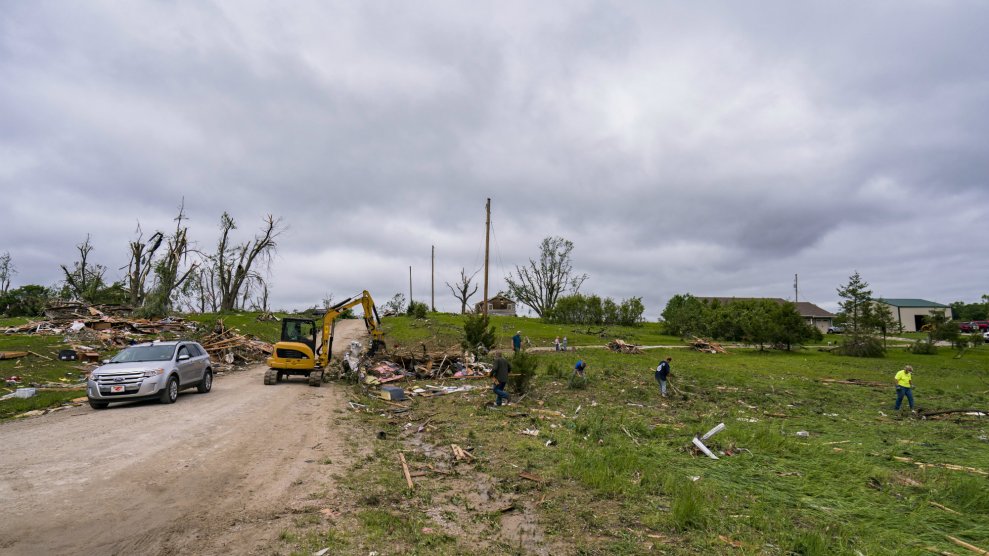
Rogelio V. Solis/AP
A powerful tornado ripped through rural Mississippi last night, killing at least 24 people and injuring dozens more.
The tornado hit Rolling Fork—a town with a population of less than 2,000, and the supposed birthplace of Muddy Waters—particularly hard when it rolled through at about 8 p.m. local time Friday night. Nearly a third of Rolling Fork residents live in mobile homes, which are especially susceptible to tornado damage. Drone footage shows decimated homes, overturned cars, a toppled water tower, and trees stripped of their bark.
First light revealing the destruction in Rolling Fork, MS #MSwx pic.twitter.com/9q5QX2wF4F
— Aaron Rigsby (@AaronRigsbyOSC) March 25, 2023
The link between climate change and more frequent or intense tornadoes is unclear, but tornadoes do appear to be increasing in frequency in the Mississippi Valley. As my colleague Emily Hofstaedter reported last year, “Runaway climate change is making extreme weather more common and deadly,” with tornadoes and other storms “striking in new territory and throughout more of the year, especially in the Midwest and Southeast.”
Ultimately, conditions were prime for destruction in Rolling Fork, where about one in five residents lives below the federal poverty line. Mississippi has suffered from decades of severe underinvestment in infrastructure, and Rolling Fork, located near the Mississippi and Yazoo Rivers, has long been at risk of flooding. “You mix a particularly socioeconomically vulnerable landscape with a fast-moving, long-track nocturnal tornado, and, disaster will happen,” Northern Illinois University meteorology professor Walker Ashley told the Associated Press. The federal government has historically been unprepared to handle sea-level rise and the consequent flooding that can result from more intense storms.
“My city is gone,” Rolling Fork Mayor Eldridge Walker said in an interview with CNN. “But we are resilient, and we’re gonna come back strong.”


















